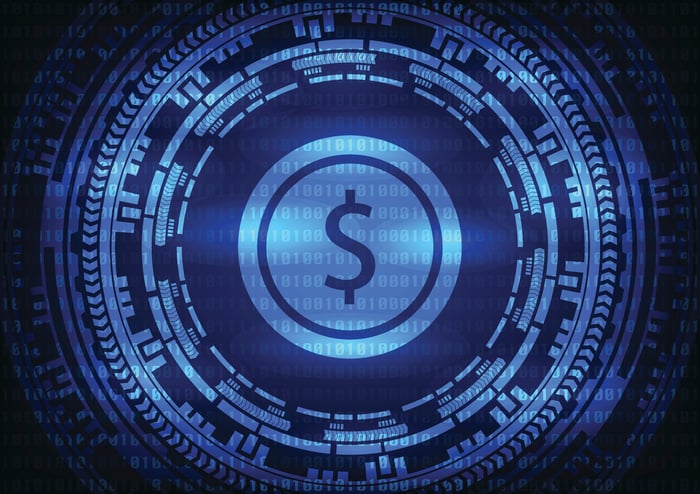By the BBB Institute and FINRA staff
This article is the second in a series on the emerging world of digital assets. Additional articles explore Initial Coin Offerings, digital tokens, the virtual currency regulatory landscape, and tips to avoid fraud and scams in this area.
You can't discuss virtual currencies for very long without bumping into references to "blockchain." As we explained in our introductory article, blockchain is the technology that powers Bitcoin and many other virtual currencies. In the case of Bitcoin, blockchain functions through the participation of many individuals who offer their computing power to maintain the peer-to-peer Bitcoin network, which sends and receives bitcoins.
Blockchain has captured the attention of many people who view it as an emerging and potentially transformative technology. Unfortunately, fraudsters love to jump on emerging trends, including blockchain technology, and aggressively target consumers with a variety of scams.
Some basic information about blockchain can help you recognize and avoid investment schemes that might reference blockchain technology in an attempt to lure you into sending money.

Image source: Getty Images.
What is blockchain?
Blockchain, also known as distributed ledger technology, functions through the participation of multiple individuals. Each "block" in a chain is composed of a series of records secured by cryptography that describe preceding and current transaction data. Cryptography involves storing and transmitting data in encrypted formats (the Greek word kryptos means hidden).
Blockchain technology is viewed as an attractive alternative to records maintained on a central database. This is because risk and management are shared among a number of different users, who are known as "nodes." Each participating individual has a "node" on the network and works collectively to maintain a permanent list of transactions. This allows all parties on the network to have access to a shared, identical, irreversible ledger of transactions. In other words, each node participates in the administration of the blockchain, including the verification of new additions to the blockchain. Each node also is capable of entering new data into the database. To add new information to the blockchain, the majority of nodes must reach consensus, which enforces the network's security.
Blockchain technology was originally engineered to prevent fraud during the exchange and payment of virtual currencies, such as bitcoin. For example, because there is a permanent record of a transaction on blockchain, the technology prevents a user from duplicating or double-spending her bitcoin.
Why is this technology attractive?
Blockchain is perceived to be innovative technology because of the transparency and permanency it can provide to recordkeeping. For instance, because a blockchain lists an entire history of transactions, anyone who wants to verify a specific transaction is theoretically able to do so. This can be done while maintaining privacy and without sharing details of the records to participants who are not entitled to view them. Additionally, because records on a blockchain cannot be altered, it is very difficult for a bad actor to falsify or alter transaction data.
Blockchain is also perceived as a valuable innovation due to the decentralized nature of its technology, which is powered by a number of different nodes that participate in maintaining the entire system and verifying a transaction before it becomes part of the permanent record. Some proponents of blockchain technology view this attribute as its most important feature. This is because blockchain proponents believe that this technology facilitates the creation of networks free from a single point of failure.
Other applications of blockchain
Blockchain technology piques the interests of many consumers, technologists, and regulators because it is said to have other applications outside of the world of virtual currencies. For example, the country of Estonia works with a private company that uses blockchain technology to maintain health records for its citizens. Separately, some companies are testing blockchain solutions to improve supply chain and shipping practices.
Proponents of the technology have speculated that blockchain technology could be used to speed up transactions that often require a trusted middleman, such as the transfer of real estate titles or the execution of contracts. According to a 2016 report by the World Economic Forum, over the past three years more than $1.4 billion has been invested in this technology to explore its uses in the financial services industry.
Blockchain, hype and fraud
In the financial world, some companies are trying to take advantage of the excitement surrounding blockchain. NASDAQ recently delisted one company due to concerns that the company made "public statements designed to mislead investors and to take advantage of general investor interest in bitcoin and blockchain technology." And the Securities and Exchange Commission has taken action against companies that have made false and misleading statements about blockchain technology in an effort to pump up the price of the stock. This isn't a new kind of fraud; it's the same old story where a company takes advantage of a hot trend, changes its name, and makes baseless claims to attract new investors to pump, then dump, the stock.
Additionally, some fraudsters have attempted to capitalize on the mystery and excitement around the term blockchain to target investors. Scammers have posed as legitimate websites that provide services to cryptocurrency users to target unknowing users.
Always use caution
Most investors are not experts on blockchain technology, so it is important to be skeptical when evaluating a claim made by a company about its entry into this arena. As a general rule, steer clear of unsolicited and internet-based investment offers -- and never wire money to pay for an offer or service.
Subscribe to FINRA's The Alert Investor newsletter for more information about saving and investing.




